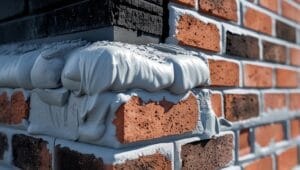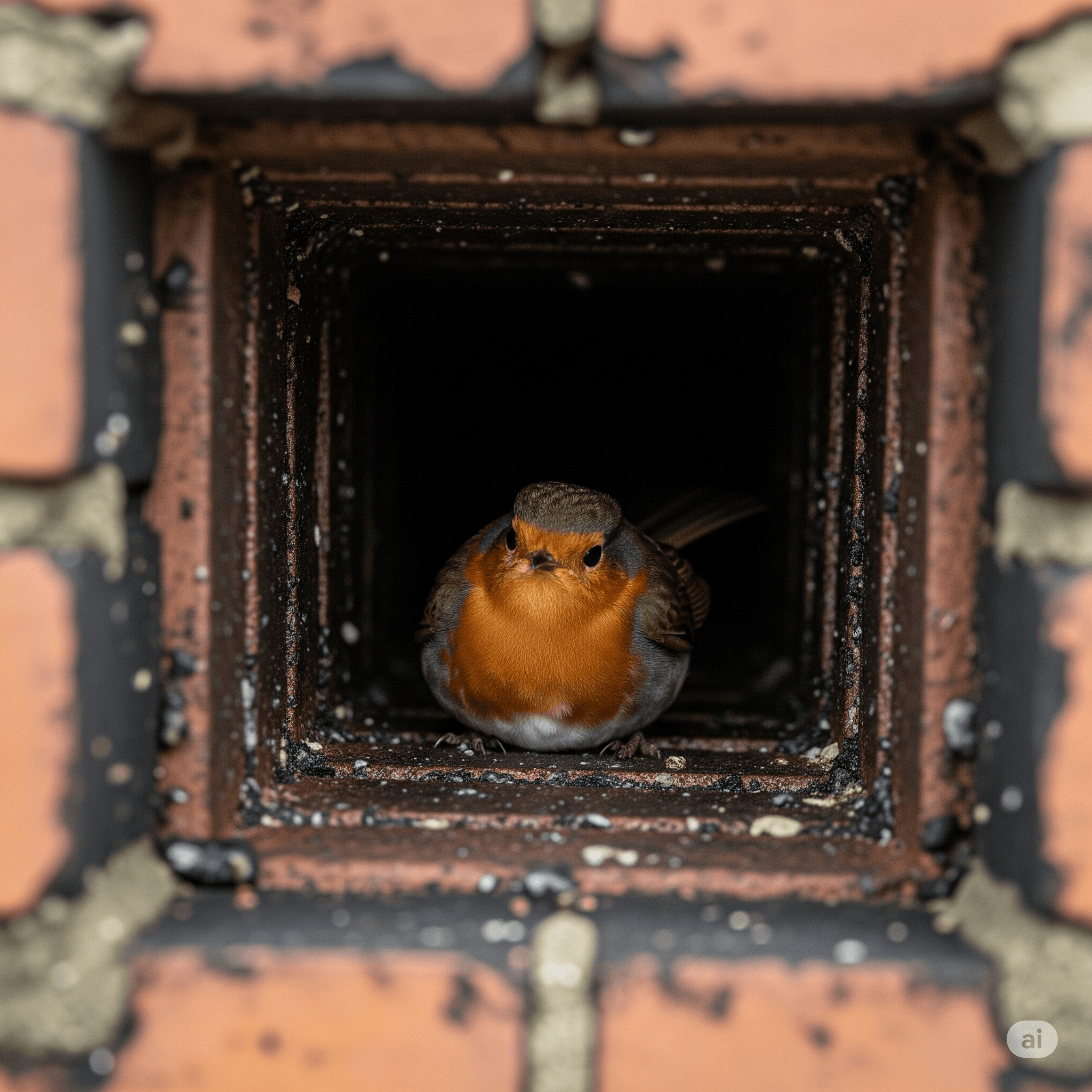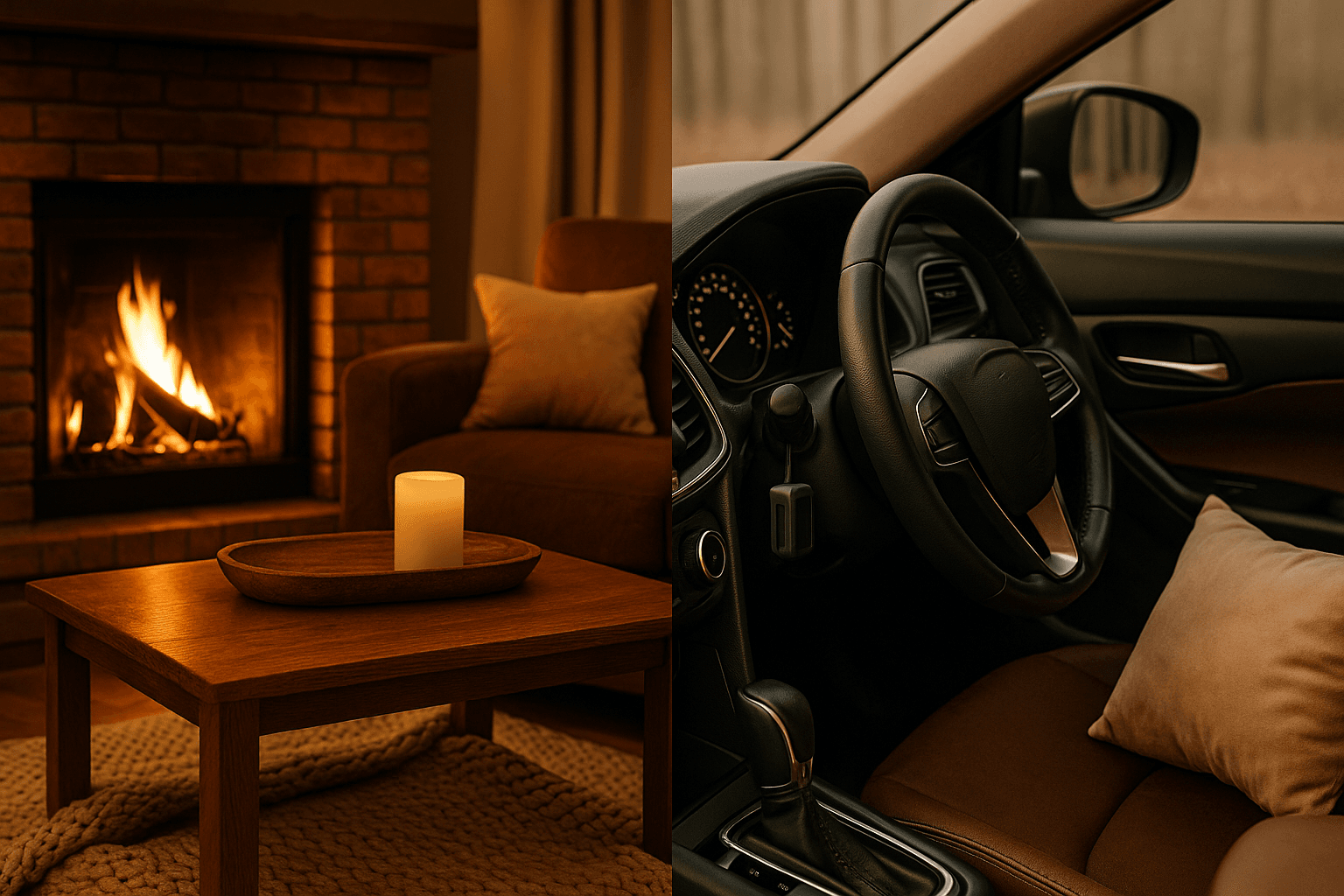The Definitive Guide to Chimney Mortar
Using the correct mortar for your chimney isn’t just about repairs—it’s about fire safety, structural integrity, and protecting your home. This expert guide explains exactly what you need to know.
CRITICAL WARNING: This is a Safety-Critical Repair
This guide is for informational purposes for minor repairs like replacing a few loose bricks (repointing). Using the wrong type of mortar can create a serious fire hazard or lead to flue gas leaks (including carbon monoxide) into your home. If your chimney has large cracks, is leaning, or has significant structural damage, STOP and call a certified professional mason immediately. Your family’s safety is paramount.
Find the Right Mortar Type Instantly
Where on the chimney are you making repairs?
Recommendation: Use Refractory Mortar
Reason: You need a specialized, high-temperature cement that can withstand direct contact with flames and extreme heat (up to 2000°F / 1093°C). Regular mortar will crack and fail, creating a severe fire risk. Scroll down for our recommended refractory product.
Recommendation: Use Type N or Type S Masonry Mortar
Reason: For the chimney’s exterior structure, you need a mortar that can withstand the elements and match the strength of the original construction. Never use refractory mortar on the exterior. Scroll down for our recommended masonry products.
Understanding the Science: Why Mortar Types Aren’t Interchangeable
It’s a common but dangerous misconception that “mortar is mortar.” The chemical compositions are engineered for vastly different purposes. Using the wrong one is like putting diesel in a gasoline engine—it will lead to catastrophic failure.
1. Refractory Mortar (For High-Heat Areas)
This is your non-negotiable choice for any part of the chimney that comes into direct contact with high heat or flames. This includes the walls of the firebox and the joints between clay flue liners.
- Composition: Unlike regular mortar, refractory mortar is made from calcium aluminate cement and aggregates like fireclay. This chemistry gives it the ability to withstand extreme thermal shock without breaking down.
- Function: It doesn’t just hold firebricks together; it creates a gas-tight seal that prevents fire, smoke, and deadly carbon monoxide from escaping the flue and entering your home’s walls or living spaces.
- Warning: Never use refractory mortar for exterior brickwork. It is not designed to withstand weather and moisture and will deteriorate.
2. Masonry Mortar (For Exterior Structure)
This is the “glue” that holds the structural bricks of your chimney stack together. It’s made from a mixture of Portland cement, hydrated lime, and sand. The ratio of these ingredients determines its properties, leading to different “types.” For chimneys, you’ll primarily encounter two:
- Type N Mortar: This is a medium-strength mortar (around 750 psi) and is the most common type used in modern residential brickwork. It’s a general-purpose mortar that offers good bonding capabilities and flexibility, allowing it to handle the expansion and contraction from outdoor temperature changes. For most repointing jobs, you should start by assuming you need Type N.
- Type S Mortar: This is a high-strength mortar (at least 1800 psi). It has a higher ratio of Portland cement, making it stronger but also more rigid. It’s used where higher compressive strength is needed, such as in areas with high winds, seismic activity, or for structures at or below grade.
The Golden Rule of Repointing: The new mortar should never be harder or stronger than the original bricks or the original mortar. If the patch is stronger than the brick, any stress or movement will cause the brick itself to crack, leading to a much more serious and expensive repair. If you have an older home (pre-1930s), the original mortar may be even softer (like Type O or lime putty), and you should consult a historic masonry expert.
Product Recommendations (Available on Amazon)
For Firebox & Flue Liners (High-Heat)

RUTLAND Refractory Cement
This is a pre-mixed, easy-to-use refractory cement that’s perfect for DIY repairs inside the firebox, such as filling cracked joints between firebricks. It’s rated for up to 2000°F, applies like a putty, and cures rock-hard to create a permanent, smoke-tight seal.
View on AmazonFor Exterior Brick Repointing

Quikrete Type N Mortar Mix
For most general chimney repointing jobs, Quikrete’s Type N mix is a reliable and widely available choice. It’s a pre-blended mix of masonry cement and sand, ensuring a consistent mixture every time. Just add water, mix to a peanut-butter-like consistency, and you’re ready to fill in those failing joints and protect your chimney’s structure.
View on AmazonFrequently Asked Questions (FAQ)
Can I use regular concrete patch on my chimney?
Absolutely not. Concrete has a very different thermal expansion rate and is extremely rigid. It will crack quickly when heated and cooled, and it will not allow the chimney structure to breathe, trapping moisture and causing the bricks to spall (flake apart).
What’s the difference between repointing and tuckpointing?
While often used interchangeably, they are technically different. Repointing is the process of grinding out and replacing damaged mortar joints. Tuckpointing is a more specialized, aesthetic technique where two different colors of mortar are used to create the illusion of very fine, perfect joints.





